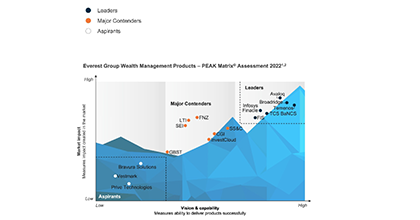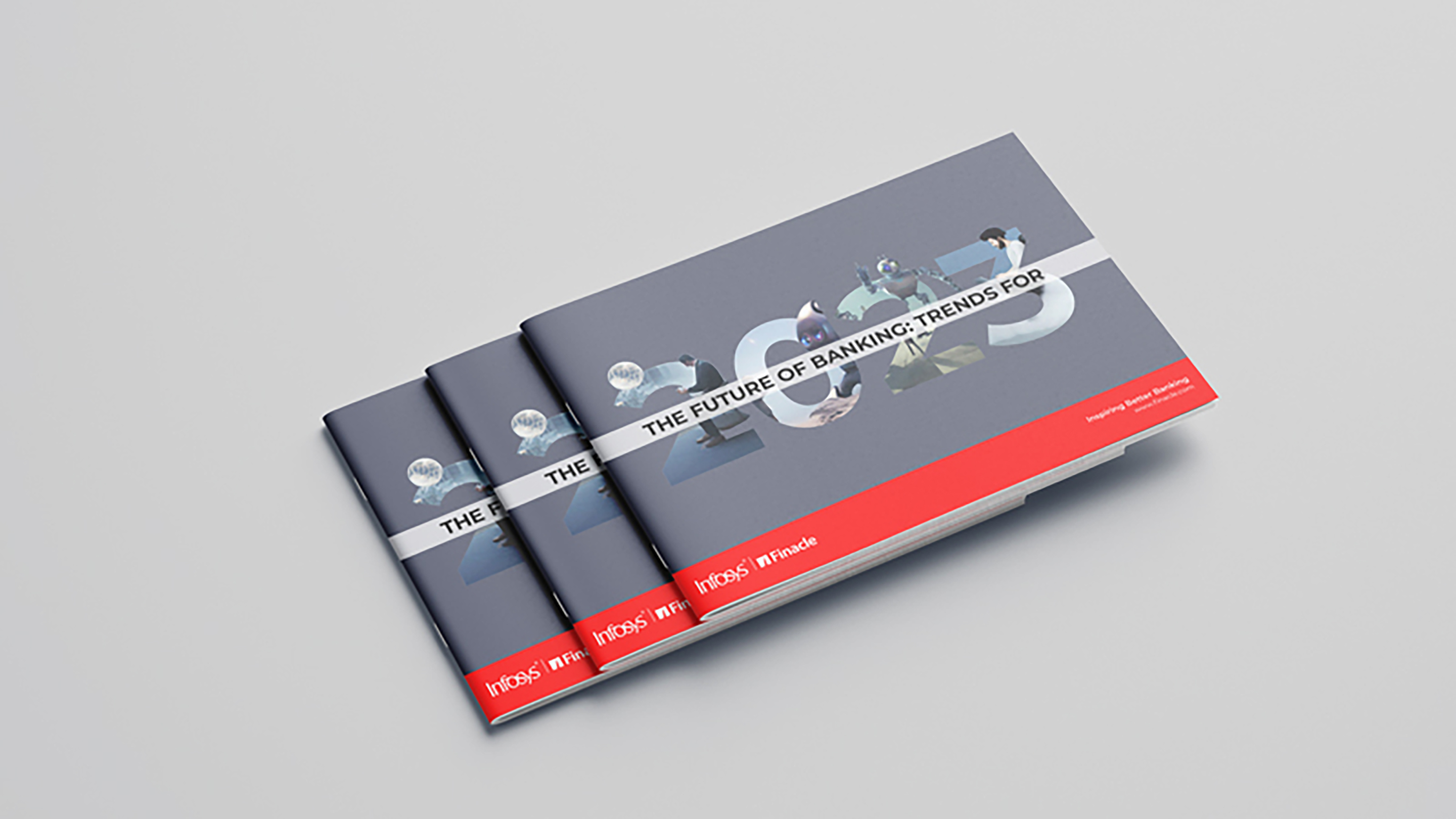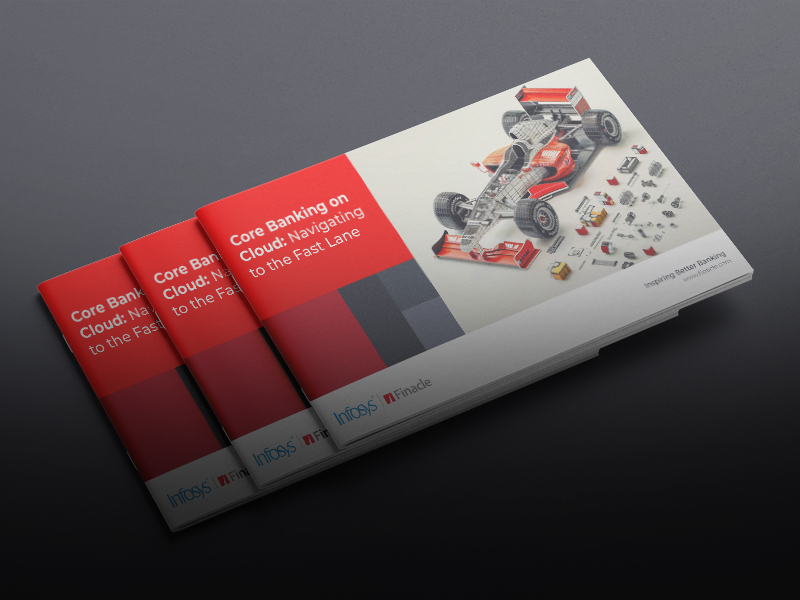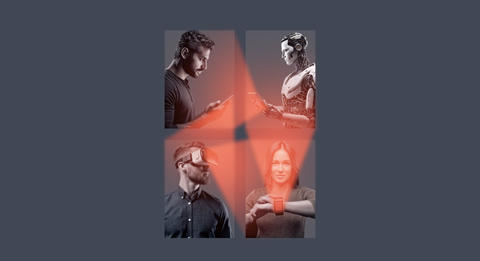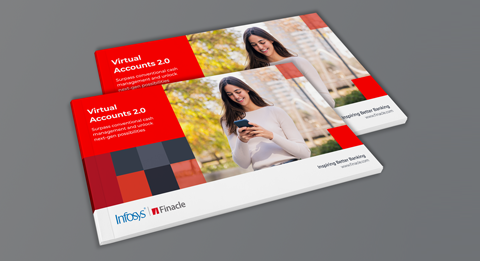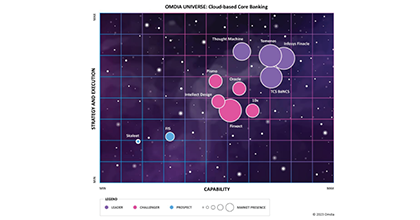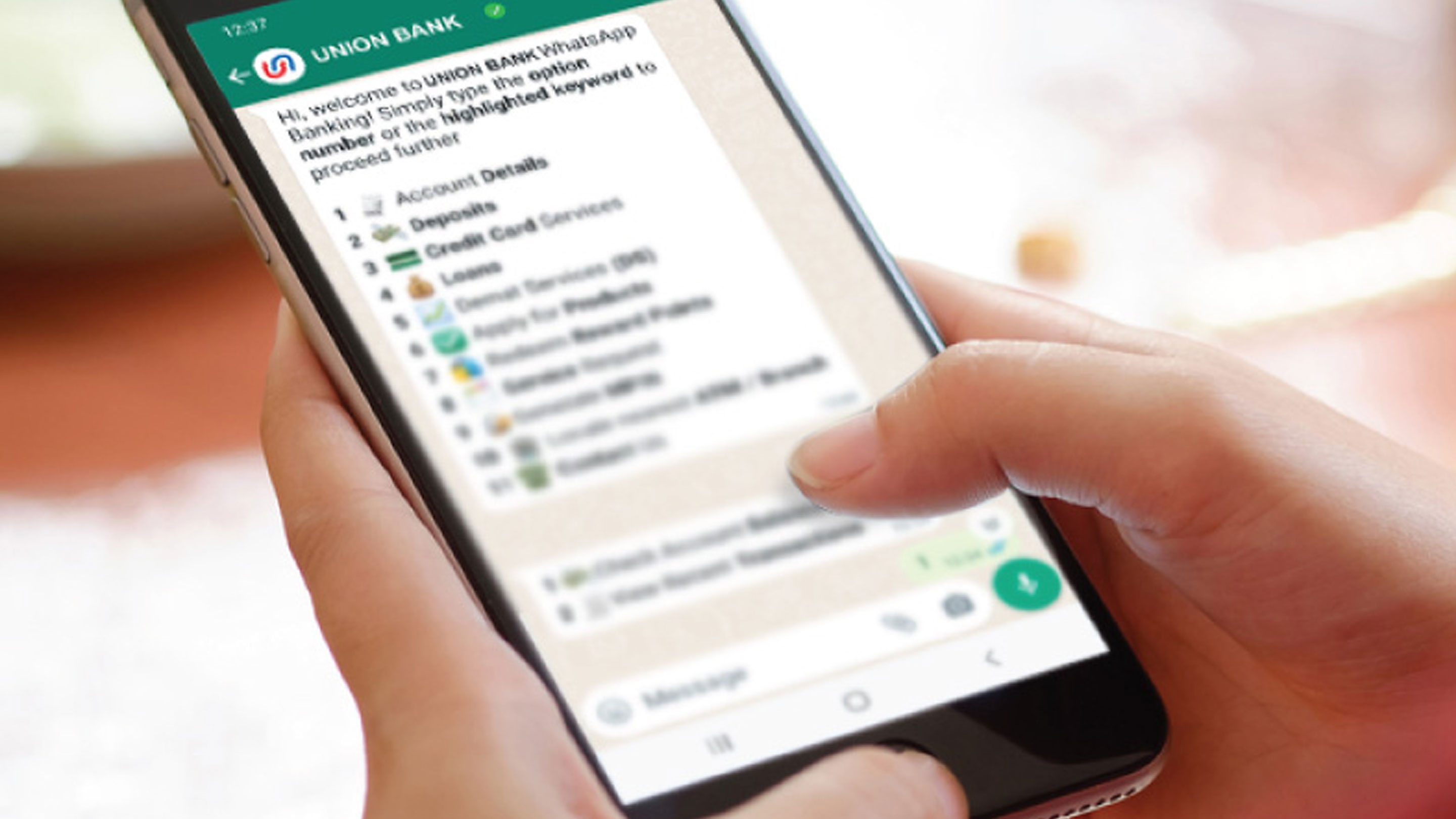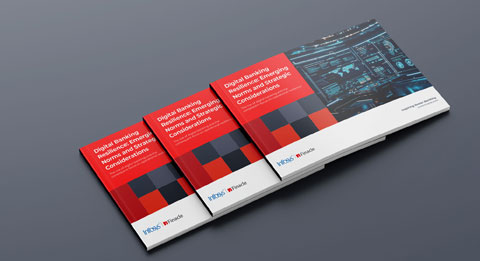-
![]() ESG in bankingESG-conscious banking should create new and future-proof value streams to build a sustainable and resilient business.Read More
ESG in bankingESG-conscious banking should create new and future-proof value streams to build a sustainable and resilient business.Read More -
![Everest Group PEAK Matri Everest Group PEAK Matri]() Everest Group PEAK MatrixA comprehensive solution delivering a full spectrum of wealth products as great experiences. It also improves the productivity of financial advisors and streamlRead More
Everest Group PEAK MatrixA comprehensive solution delivering a full spectrum of wealth products as great experiences. It also improves the productivity of financial advisors and streamlRead More -
![]() Subsidiary of an American Bank in IndonesiaFind out how a leading American bank adapts to a digitalized trade and supply chain finance operations as a part of its larger transformation by leveraging Finacle Trade Finance Solution Suite.Read More
Subsidiary of an American Bank in IndonesiaFind out how a leading American bank adapts to a digitalized trade and supply chain finance operations as a part of its larger transformation by leveraging Finacle Trade Finance Solution Suite.Read More
-
![]() Recomposing Banking: Leading the Digital ContinuumReport gives you a glimpse of the major areas where recomposing banking will create significant impact and value, Infosys Finacle has put together a report on..Read More
Recomposing Banking: Leading the Digital ContinuumReport gives you a glimpse of the major areas where recomposing banking will create significant impact and value, Infosys Finacle has put together a report on..Read More -
![]() Core Banking on Cloud: Navigating to the Fast LaneTake a deep dive into cloud-based core banking and explore the imperatives, opportunities and challenges, and the hallmarks of a robust solution.Read More
Core Banking on Cloud: Navigating to the Fast LaneTake a deep dive into cloud-based core banking and explore the imperatives, opportunities and challenges, and the hallmarks of a robust solution.Read More -
![]() Embracing Payments ComposabilityA step-by-step guide for maximizing Real Time Payment opportunities by embracing Payments Composability...Read More
Embracing Payments ComposabilityA step-by-step guide for maximizing Real Time Payment opportunities by embracing Payments Composability...Read More
-
![]() Shaping Banking’s Next: Banking Technology Trends for 2025 and BeyondThe banking industry has been balancing disruption and opportunity for several years now, and the pace of change shows no signs of slowing as we move into 2025 and beyond.Read More
Shaping Banking’s Next: Banking Technology Trends for 2025 and BeyondThe banking industry has been balancing disruption and opportunity for several years now, and the pace of change shows no signs of slowing as we move into 2025 and beyond.Read More -
![]() Virtual Accounts 2.0: Surpass Conventional Cash Management and Unlock Next-Gen PossibilitiesVirtual Account Management was a groundbreaking shift in the banking landscape, revolutionising use cases like cash concentration, pooling, centralised treasury management, and in-house banking (POBO, ROBO, COBO)Read More
Virtual Accounts 2.0: Surpass Conventional Cash Management and Unlock Next-Gen PossibilitiesVirtual Account Management was a groundbreaking shift in the banking landscape, revolutionising use cases like cash concentration, pooling, centralised treasury management, and in-house banking (POBO, ROBO, COBO)Read More -
![]() Unlocking Hybrid CloudAs banks push forward with their digital transformation agenda, cloud serves as a pivotal enabler. Each bank, at varying stages of adoption, crafts its unique path, dictated by context, regulations, and risk appetite.Read More
Unlocking Hybrid CloudAs banks push forward with their digital transformation agenda, cloud serves as a pivotal enabler. Each bank, at varying stages of adoption, crafts its unique path, dictated by context, regulations, and risk appetite.Read More
-
![]() Banking on CloudThis report from Infosys Finacle delves into the need for accelerating cloud adoption, highlights the current state of the industry, and puts forth key recommenRead More
Banking on CloudThis report from Infosys Finacle delves into the need for accelerating cloud adoption, highlights the current state of the industry, and puts forth key recommenRead More -
![]() Omdia Universe | Cloud-based Core BankingIn the report, Omdia highlights the following key capabilities of leading cloud-based core banking providers:Read more
Omdia Universe | Cloud-based Core BankingIn the report, Omdia highlights the following key capabilities of leading cloud-based core banking providers:Read more
-
![]() Emirates NBDEmirates NBD consolidates its operations on a single version for scalability, agility, and standardization.Read More
Emirates NBDEmirates NBD consolidates its operations on a single version for scalability, agility, and standardization.Read More -
![]() A Global Top 5 BankDiscover how a global top 5 bank headquartered in the US accelerated payments transformation.Read More
A Global Top 5 BankDiscover how a global top 5 bank headquartered in the US accelerated payments transformation.Read More -
![]() Union Bank of IndiaUnion Bank of India launches Union Virtual Connect (UVConn) by leveraging WhatsApp to provide customers personalized banking services.Read More
Union Bank of IndiaUnion Bank of India launches Union Virtual Connect (UVConn) by leveraging WhatsApp to provide customers personalized banking services.Read More

Systems’ Integration or Organizations’ Integration?
Blogs
It might be interesting to view Systems Integration work through the lens of organizational behavior. A typical vendor-client relationship between two firms is pretty unambiguous, easy to operationalize. A client organization engages a vendor for either upstream or downstream work; the vendor does it in its own setup and delivers to the client organization. The client organization evaluates the performance of the vendor, at times providing an incentive, and this easily fits into the overall supply chain with few adjustments on either side (vendor or client). Neither party is threatened in this setup.
A Systems Integrator’s (SI) entry fundamentally changes this equation because the SI delivers the service in the client ecosystem by being very much part of it. The SI’s work involves interacting intensively with multiple entities within the client organization. This brings up the internal dynamics and power play of the different sub-groups within the client organization. The SI itself becomes an important entity, which needs social and cultural integration as well – it can’t be clubbed under stakeholder management. If the SI work is large, it needs adjustment on the client side too by way of organizational adaptations.
Si as a Threat to the Client
A large client is never a homogenous group within. It consists of multiple sub-companies and entities divided by work, functions, geographies, offices etc. Though all these entities are aligned in the overall mission, sometimes they also compete with each other. A large SI’s entry into the client system changes the equilibrium as it shows up with substantial overlap. An SI’s mandated work can overlap with that of some entities within the client organization. It becomes a threat to some. This poses the first challenge in the SI’s integration with the client organization.
Best Practices vs Client Practices
SIs are the specialists in execution; the ones with the industry standards and time tested processes and methodologies. The client organizations (large ones) also have their own processes, which have some maturity and have been proven in their context. This is the first conflict in defining and institutionalizing the processes. The SI, as a specialist organization, can do the work at lower cost and higher quality but needs to tweak it for the client’s acceptance.
Who Is the Boss
For the program objectives to be met successfully, the SI needs to manage and assert itself within the client organization. The SI is responsible for managing and driving the client organization that in turn evaluates its performance and remunerates it. It is a cyclical process, which is inherently ridden with conflict. In a complex matrix setup it can take a lot of time to divide the right level of authority and responsibility between the SI and the client.
Governance Is the Key
I think a large SI program should be looked at through the prism of M&A, cultural integration included. As in any M&A, the key success factor is to set up the right operating model with a clear definition (and more importantly acceptance) of the roles and responsibilities in the team. In large programs the team gets mixed up, at times part of the client team executes the program and sometimes parts of the program team perform the client functions. The model should clearly segregate the “delivery entities” and “client entities” when it comes to activities and deliverables. The primary function of the delivery entity is to create the output, which the client entity accepts and signs-off as in a traditional supplier-customer relationship. Program success depends on “one-team” effort, irrespective of organizational boundaries.
Author Profile
Sunil has over 15 years of experience in consulting, system integration and product development roles with Infosys, Accenture, McKinsey, Oracle and Tata Steel. He can be contacted at sunil_mishra06@infosys.com



©2025 -Edgeverve Systems Limited | All rights reserved

